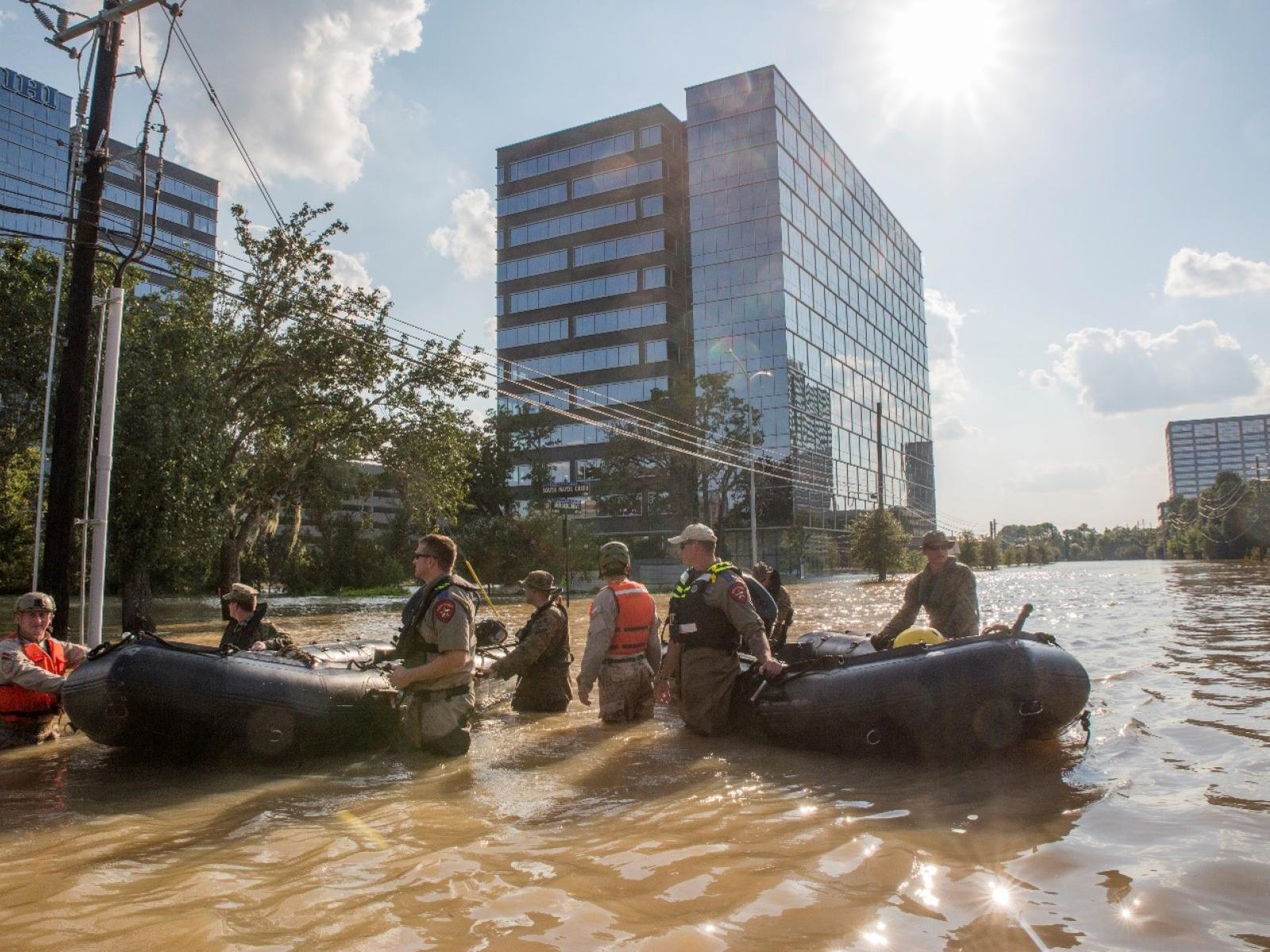Fluvial-Coastal Flooding in a Changing Climate
Future global warming-induced changes to watershed and coastal processes can significantly affect the magnitude of fluvial-coastal compound flooding

High-resolution modeling allows researchers to better understand how a warming climate will affect flooding in coastal areas.
(Image by U.S. Department of Agriculture | Flickr)
The Science
Coastal storm surges, direct runoff from heavy rain, and river flooding can happen simultaneously or successively, creating a compound event with more severe flooding. Despite the predicted rise in global temperature and increase in rainfall intensity in future climates, the nonlinear interactions between watershed processes and the estuarine tidal system's response to sea level rise may not necessarily increase the compound flood potential. Better understanding and predicting hazards from compound flooding requires using high-resolution modeling that accounts for the interacting processes between watersheds and coastal areas.
The Impact
Two high-resolution numerical modeling frameworks are integrated to properly represent interactions between watershed hydrological and coastal hydrodynamic processes. This research illustrates that it is essential to systematically resolve key physical processes to improve the accuracy of compound flood modeling in low-lying and densely populated estuarine regions. Scenario-driven modeling experiments suggest that changes in watershed and bay characteristics can significantly impact flood generation in estuarine systems. Notably, increasing global temperature and rainfall intensity may not lead to higher flooding due to the complex and nonlinear interactions of watershed and coastal processes. Therefore, future compound flood hazard studies must improve modeling accuracy by considering these interactive processes.
Summary
Cities along the coast and in low-lying and densely populated estuaries are highly susceptible to coastal high tides, storm surges, and excessive river discharge. This study focused on modeling the interacting flood processes in freshwater-influenced coastal systems and assessed the possibility of compound flood hazards in a future warmer climate. Researchers examined the interplay between antecedent soil moisture conditions, river discharge, and compound flooding during a hurricane event. They assessed the impact of sea level rise on the distribution of river floods and storm surges. Ultimately, the work showed that climate change induced changes in soil moisture and sea level rise could significantly reduce the storm surge magnitude in shallow estuaries. Climate studies that examine the risk of compound floods on a broad scale must consider the interactions between watershed and coastal dynamics to produce accurate projections.
PNNL Contact
David Judi, Pacific Northwest National Laboratory, david.judi@pnnl.gov
Funding
This work was supported by the MultiSector Dynamics program area of the Department of Energy, Office of Science, Biological and Environmental Research program as part of the multi-program, collaborative Integrated Coastal Modeling (ICoM) project. All model simulations were performed using resources available through Research Computing at Pacific Northwest National Laboratory.
Published: April 13, 2023
Deb, M., Sun, N., Yang, Z., Wang, T., Judi, D., Xiao, Z., and Wigmosta, M. S. 2023. “Interacting Effects of Watershed and Coastal Processes on the Evolution of Compound Flooding During Hurricane Irene,” Earth’s Future, 11, e2022EF002947. [DOI: 10.1029/2022EF002947]